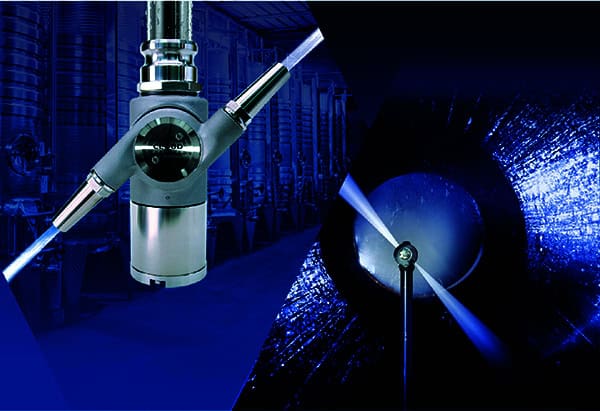By Diane Silcock
DESPITE being a common practice in many industries, manual tank cleaning methods are riddled with drawbacks that hinder efficiency, increase risks, and compromise effectiveness. These are challenges faced by the beverage and wine industries, but also extend to food, petrochemical and pharmaceutical operations.
In the realm of Intermediate Bulk Container (IBC), tanker, and tote cleaning, the need for efficiency and sustainability has become more crucial than ever. “With automated cleaning systems”, says Monitor Engineering MD Grant Orsmond, “businesses now have a solution to optimise their cleaning processes and enhance productivity.”
The challenges and concerns around manual tank cleaning extend to issues of time wastage, safety hazards, production loss, cross-contamination, and inconsistent cleaning results.
Manual tanker, vessel or tote cleaning is labour-intensive and time-consuming resulting in downtime and lost productivity, while harsh chemicals, extremely hot water, and high-pressure hoses pose risks of chemical exposure, burns, and accidents. Added to this, inadequate systems can lead to residual dust and contaminants, which can affect subsequent production runs and result in cross-contamination issues. Achieving consistent and effective tank cleaning outcomes with manual methods is a considerable challenge.
“Automated tank cleaning has emerged as a game-changing solution for achieving optimal cleanliness,” says Orsmond. “These advanced systems utilise cutting-edge technology and specialised equipment to efficiently clean tanks. By streamlining the tank cleaning process, businesses ensure consistent, reliable, and repeatable results, minimising safety hazards, equipment malfunctions, and productivity losses.”
Reduced water, chemical and energy use
Compared to manual methods, automated tank cleaners slash the need for high water consumption, chemical usage, and energy consumption. Precise application of cleaning liquid reduces waste, resulting in lower water costs and decreased disposal expenses.
Controlled chemical dosing enhances vessel cleaning effectiveness while minimising environmental impact. Reduced water and chemical usage also lead to significant energy savings, contributing to greener operations and aligning with sustainability goals.
A bigger focus on sustainability
Less resource consumption has a knock-on effect that minimises waste as well. With less water and energy used, companies not only use fewer resources but can reduce their harmful emissions. Adopting an automated tank cleaning system demonstrates a commitment to sustainability, fostering positive relationships with the community and promoting an environmentally-conscious image.
Increased savings
Maintenance costs decrease due to minimised breakdowns and repairs. Labour costs associated with manual vessel cleaning processes are reduced, as automated systems optimise workforce allocation. The elimination of physical cleaning risks enhances workplace safety, preventing accidents and related costs.
Important factors to assess before purchasing an automated tank system
Investing in an automated cleaning system requires careful evaluation and consideration of several crucial factors. “Understanding these key aspects is essential to choosing the most suitable solution for a company’s specific cleaning needs. Tank size and geometry, internal obstructions, and residue types are important factors to be taken into account when purchasing spray nozzles. We therefore offer a no-charge tank cleaning audit, to identify the best cleaning solution for a company’s operations,” concludes Orsmond.
Contact grant@monitorspray.co.za or visit www.spray.co.za















